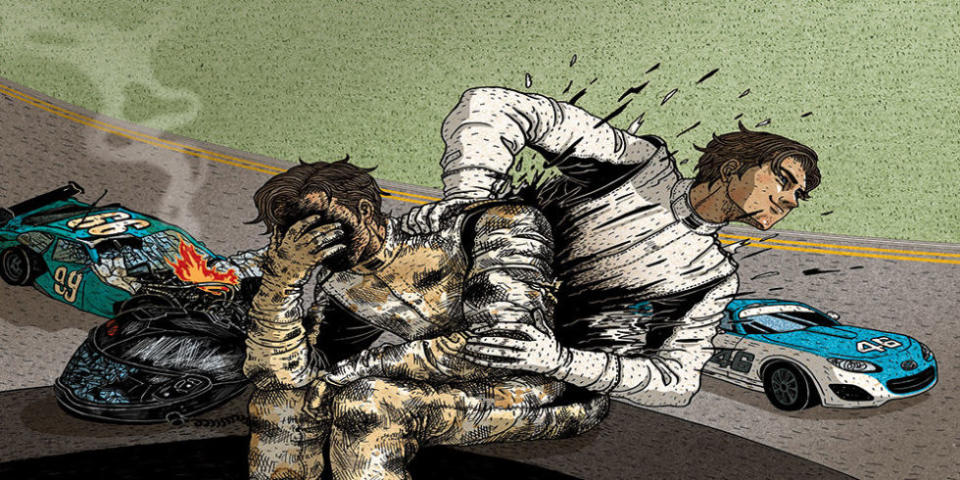What It Takes to Get Back in a Race Car After a Huge Accident

To borrow an old line about racing drivers, there are three kinds: Those who have crashed, those who will crash, and those who are crashing right now. It happens. Set out to chase limits on track, and eventually you'll find them. But repairing your psyche afterward can be harder than ironing out the sheetmetal.
"I certainly don't begrudge people that have their first big one who think, Wow, I thought this was all fun and games, and decide not to do it anymore," allows sports-car racing legend Tommy Kendall.
He would know. In 1991, Kendall crashed a GTP prototype at Watkins Glen, one of the nastiest shunts in modern IMSA hisstory. Less than 18 months later, he was on the way to his fourth series championship. The first step to getting your confidence back after a wreck, he says, is to identify which limit you've hit. Was there a mechanical failure, or did you mess up?
In the former case, start by asking how. Inspect the source, get intimate with nuts and bolts. Past that, acknowledge and accept the risk inherent to racing at any level.
"If it's a mechanical [crash], you've got to figure out: Is this something I can live with? Basically, decide if you want to be doing this."
Packing one up of your own volition is more complicated. Here, Kendall says to start by owning it, then ask why.
"For the amateur that's aspiring and working on getting faster, don't be too hard on yourself. But also don't delude yourself.
Berealhonestwithwhathappened.Sometimes,earlierinyour career, you don't even know what exactly went wrong. That's the hard part. Those are tough to recover from."
Kendall recommends a mental "reset." Pinpoint what caused you to wreck-a hitch in technique, lapse of focus, getting ahead of your skis-to keep things manageable. Self-doubt is healthy, so long as it's contained and leveraged into improving.
Dr. Shaun Tyrance, a consulting sports psychologist formerly with Chip Ganassi Racing, concurs. "The fastest drivers I've worked with, from the lower ranks right up through NASCAR Sprint Cup, they compartmentalize."
"Once you've got the area that caused the problem," says Kendall, "build back up to it, then cross through that area." Let the other stuff come naturally.
"Some guys have unshakable confidence. That was not the case with me," he admits. "I always snuck up on things: Go a bit, then analyze and think about it. Go, analyze, think. That's how you get faster. And, for me, how I got back in the groove after a crash."
Kendall thinks heading back on the racetrack quickly is probably better. Again, Tyrance agrees. Eventually, you'll stop "driving not to crash" and feel comfortable pushing again. If breaking through presents a real challenge, try turning some laps in a slower car, something easy to manhandle. Start rebuilding confidence, and recommit.
"Learn what you can from it," Kendall says, "then let the rest go."
You Might Also Like

 Yahoo Autos
Yahoo Autos 